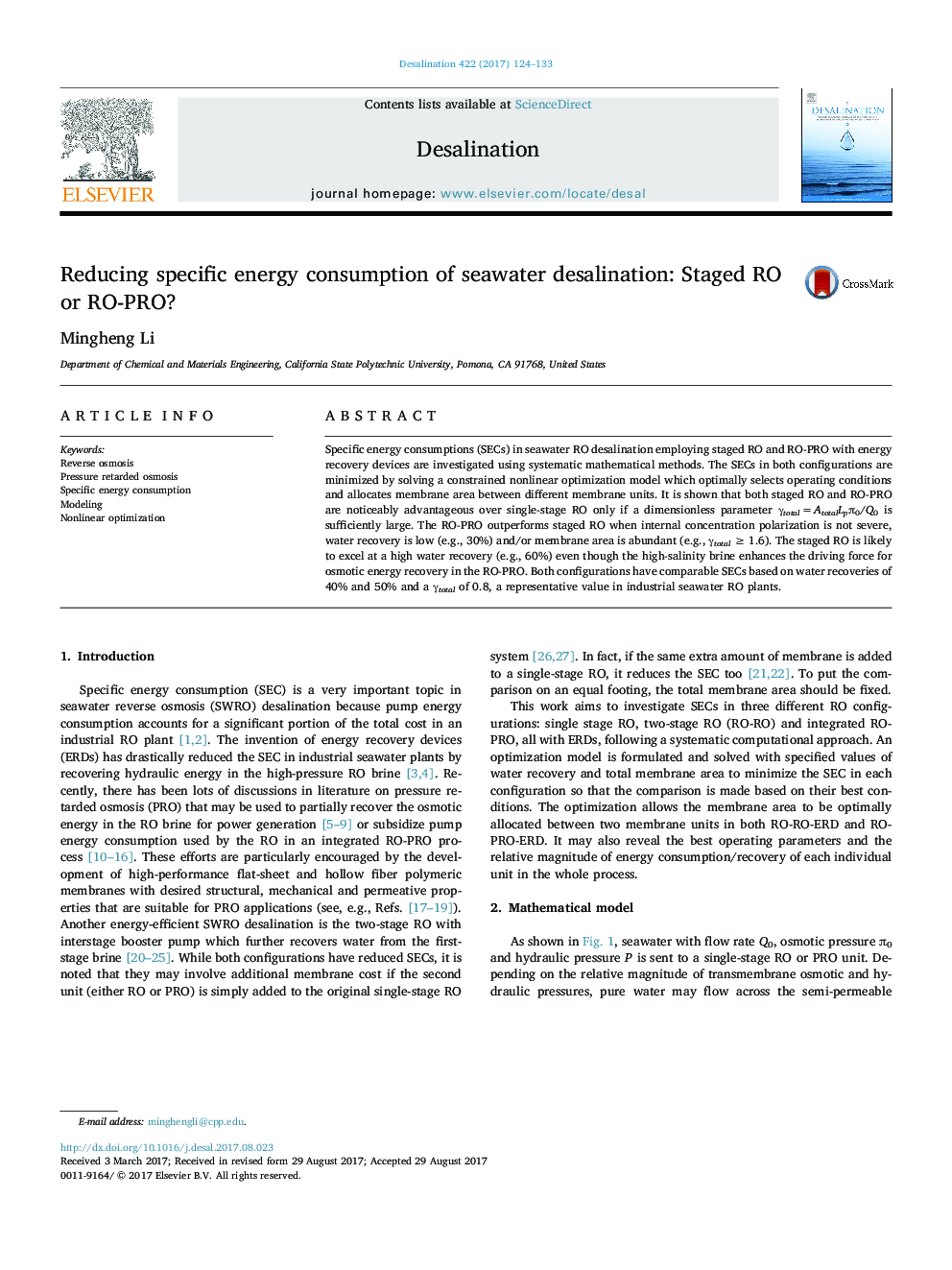| Article ID | Journal | Published Year | Pages | File Type |
|---|---|---|---|---|
| 4987597 | Desalination | 2017 | 10 Pages |
Abstract
Specific energy consumptions (SECs) in seawater RO desalination employing staged RO and RO-PRO with energy recovery devices are investigated using systematic mathematical methods. The SECs in both configurations are minimized by solving a constrained nonlinear optimization model which optimally selects operating conditions and allocates membrane area between different membrane units. It is shown that both staged RO and RO-PRO are noticeably advantageous over single-stage RO only if a dimensionless parameter γtotal = AtotalLpÏ0/Q0 is sufficiently large. The RO-PRO outperforms staged RO when internal concentration polarization is not severe, water recovery is low (e.g., 30%) and/or membrane area is abundant (e.g., γtotal ⥠1.6). The staged RO is likely to excel at a high water recovery (e.g., 60%) even though the high-salinity brine enhances the driving force for osmotic energy recovery in the RO-PRO. Both configurations have comparable SECs based on water recoveries of 40% and 50% and a γtotal of 0.8, a representative value in industrial seawater RO plants.
Keywords
Related Topics
Physical Sciences and Engineering
Chemical Engineering
Filtration and Separation
Authors
Mingheng Li,
